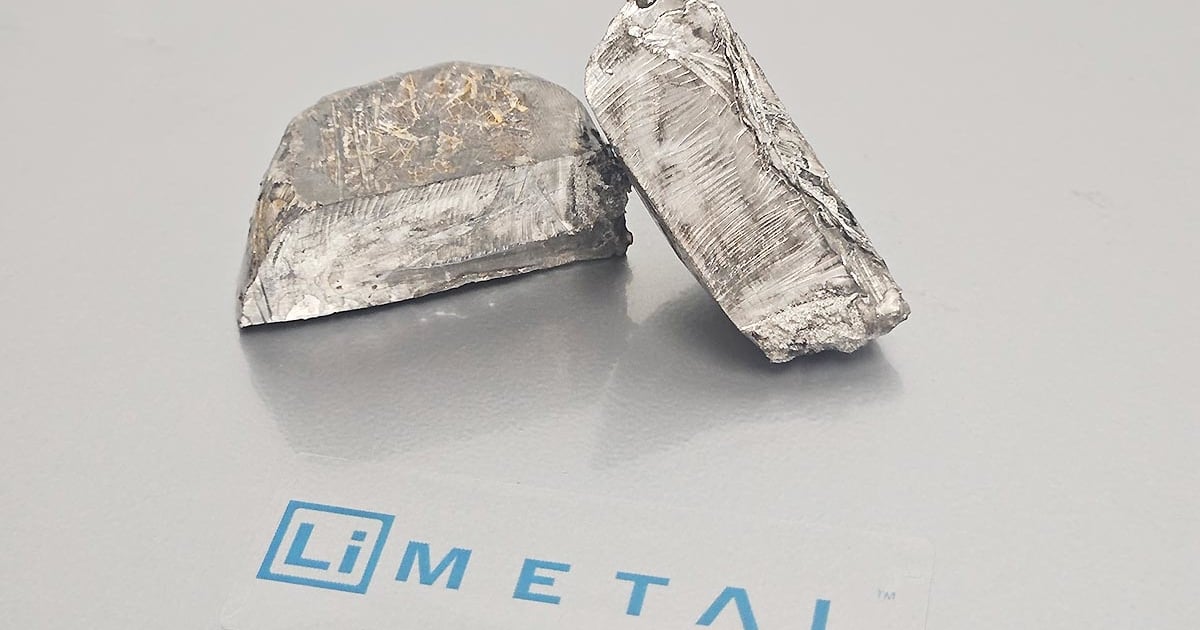
Li-Metal, a battery materials company based in Canada, says it has produced lithium metal from lithium carbonate, which reduces the number of steps and harmful byproducts involved in refining lithium, a key electric vehicle battery material.
The new technology generates lithium metal without the need for an intermediary step that produces lithium chloride. Refining lithium chloride produces chlorine gas, which is toxic and has corrosive properties.
“It’s a route to really mobilize the lithium carbonate that’s produced for lithium ion batteries and to transform that into lithium metal that will be needed by next-generation batteries,” Maciej Jastrzebski, co-founder and chief technology officer of Li-Metal, told Automotive News. “It opens up basically a line of sight onto a large number of lithium units that can then be converted to metal.”
The company’s announcement comes amid skyrocketing demand for EVs. Some automakers have promised all-electric lineups within less than two decades, and the industry is accelerating production of batteries and working on more energy-dense chemistries to meet the needs of eager customers who want a longer range.
Conventional lithium ion batteries use graphite instead of lithium metal anodes, but lithium metal helps cells achieve greater energy density, and it slows decline in energy capacity. Lithium also typically comes from friendlier U.S. trade partners than graphite.
As ambitious EV goals drive growing demand, battery materials efficiencies will be a piece of the supply solution, along with more mining and recycling.
Battery-grade graphite is mostly mined in China, and the Inflation Reduction Act requires that 40 percent of the value of a battery’s critical minerals be sourced in the U.S. or a free-trade partner for the vehicle to be eligible for financial incentives.
That, combined with their increased energy density, means that “lithium metal anodes have been one of those areas of great interest to the battery and OEM community,” said Conrad Layson, a senior analyst at AutoForecast Solutions. “This process could actually accelerate, to some degree, the adoption of the next technical innovation.”
Li-Metal has been working for about a year on an anode piloting facility in Rochester, N.Y., and has produced thousands of meters of lithium metal anode material, said Jastrzebski. Late last year, the company began piloting the lithium metal production process in Markham, Ontario, where Li-Metal is based. For now, production is still in the pilot phase and in relatively small quantities.
The company is in talks with 27 automakers and battery developers, with 13 next-generation battery developers sampling materials.
Jastrzebski declined to say when Li-Metal plans to produce lithium metal using the new process commercially. He said cost savings will come from a simpler supply chain and flexibility with manufacturing facilities and processes because of the lack of noxious chlorine gas. But he acknowledged that the final product will likely not be cheaper.
Jastrzebski also said the company is executing engineering studies that will provide a better sense of where cost savings will come from and the road to commercial scale.
Richard Laine, a professor of materials science and engineering at the University of Michigan who researches batteries, said the company must overcome scale and cost hurdles before the technology can be successful.
“If you make lithium at the gram level, everybody will say, ‘How nice’ and move on. You have to make kilograms of lithium,” said Laine. And, “we don’t know if the cost of that process is cheaper than the traditional process that’s used to date.”